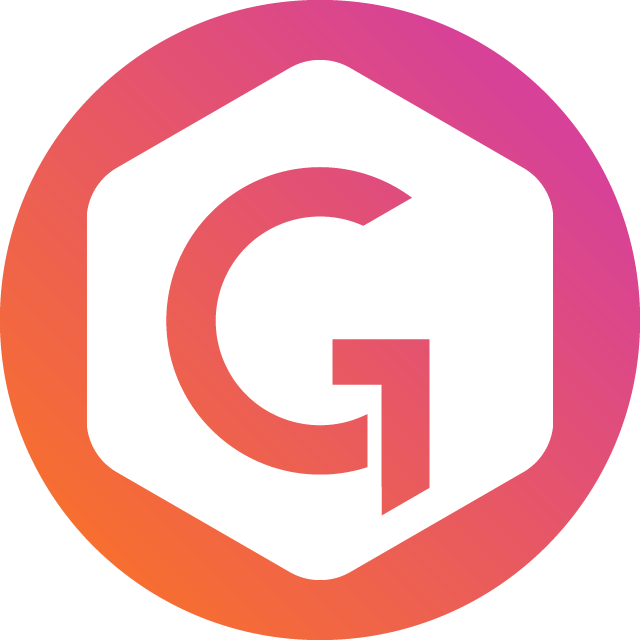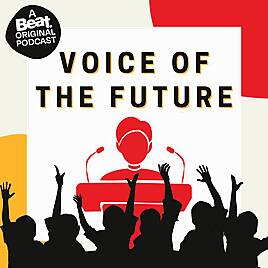
Forever Fresh
31 January - 28 minsWe eat apples in the summer and enjoy bananas in the winter. When we do this, we go against the natural order of life which is towards death and decay. What gives? This week, Latif Nasser spoke with Nicola Twilley, the author of Frostbite: How Refrigeration Changed Our Food, Our Planet, and Ourselves. Twilley spent over a decade reporting about how we keep food alive as it makes its way from the farm to our table. This conversation explores the science of cold, how fruits hold a secret to eternal youth, and how the salad bag, of all things, is our local grocery store’s unsung hero.
Special thanks to Jim Lugg and Jeff Wooster
EPISODE CREDITS:
Reported by Latif Nasser and Nicola Twilley
w...

Fertility Cliff
After 35, does fertility tank? As she -- and her friends — approached the age of 35, senior correspondent Molly Webster kept hearing a phrase over and over: “fertility cliff.” It was a short-hand term to describe what she was told would happen to her fertility after she turned 35 — that is, it would drop off. Suddenly, sharply, dramatically. And this was well before she was supposed to hit menopause. Intrigued, Molly decided to look into it — what was the truth behind this so-called cliff, and when, if so, would she topple? This story first premiered in “Thirty Something,” a 2018 Radiolab live show that was part of, Gonads, (https://radiolab.org/series/radiolab-presents-gonads)a six-episode audio and live event series all about reproduction and the parts of us that make more of us. The live event was produced by Rachael Cusick and edited by Pat Walters. Special thanks to epidemiologist Lauren Wise, at Boston University. Plus, Emily, Chloe, and Bianca. And of course, Jad Abumrad. If you’re more of a visual person, here are the graphs we explain in the episode, we also include links to the corresponding papers in our Episode Citations Section, below! LINK TO GRAPHS: https://media.wnyc.org/i/1860/1046/c/80/2025/12/FERTILITY_AGE_GRAPHS_1-4.jpg EPISODE CREDITS: Reported by - Molly Webster Produced by - Arianne Wack Fact-checking by - Diane A. Kelly EPISODE CITATIONS: Audio: Gonads (https://radiolab.org/series/radiolab-presents-gonads/) A six-part audio series on reproduction and the parts of us that make more of us The Menopause Mystery (https://radiolab.org/podcast/the-menopause-mystery) One of Radiolab’s most listened-to episodes of 2025! Videos: “Radiolab Presents: Thirty Something” https://youtu.be/LOJVAaSwags?si=czCBraHf1JEqmAQi Research Articles: Graph 1: Can assisted reproduction technology compensate for the natural decline in fertility with age? A model assessment (https://zpr.io/ft6dqdbkJnTd) Graph 2: Ovarian aging: mechanisms and clinical consequences (https://zpr.io/GrPLebynpvxV) , Brookmans, et al. BUT, the graph was borrowed and actually comes from this 1991 paper, Delaying childbearing: effect of age on fecundity and outcome of pregnancy” (https://zpr.io/whWg2UAZsb6h) Graph 3 and 4: Age and fecundability in a North American preconception cohort study, (https://zpr.io/Rmqry4Kd67hY) Wise et al; Dutch fertility research Further reading: Predicting Fertility, (https://zpr.io/YEdfiYT29rUh): Magazine article on Lauren Wise’s research, Sign up for our newsletter!! It includes short essays, recommendations, and details about other ways to interact with the show. Signup (https://radiolab.org/newsletter)! Radiolab is supported by listeners like you. Support Radiolab by becoming a member of The Lab (https://members.radiolab.org/) today. Follow our show on Instagram, Twitter and Facebook @radiolab, and share your thoughts with us by emailing [email protected]. Leadership support for Radiolab’s science programming is provided by the Simons Foundation and the John Templeton Foundation. Foundational support for Radiolab was provided by the Alfred P. Sloan Foundation.
26 mins
26 December Finished

The Good Show
The standard view of evolution is that living things are shaped by cold-hearted competition. And there is no doubt that today's plants and animals carry the genetic legacy of ancestors who fought fiercely to survive and reproduce. But in this hour that we first broadcast back in 2010, we wonder whether there might also be a logic behind sharing, niceness, kindness ... or even, self-sacrifice. Is altruism an aberration, or just an elaborate guise for sneaky self-interest? Do we really live in a selfish, dog-eat-dog world? Or has evolution carved out a hidden code that rewards genuine cooperation? Sign up for our newsletter!! It includes short essays, recommendations, and details about other ways to interact with the show. Sign up (https://radiolab.org/newsletter)! Radiolab is supported by listeners like you. Support Radiolab by becoming a member of The Lab (https://members.radiolab.org/) today. Follow our show on Instagram, Twitter and Facebook @radiolab, and share your thoughts with us by emailing [email protected] support for Radiolab’s science programming is provided by the Simons Foundation and the John Templeton Foundation. Foundational support for Radiolab was provided by the Alfred P. Sloan Foundation.
1 hour 2 mins
19 December Finished

The Alien in the Room
explicitIt’s faster than a speeding bullet. It’s smarter than a polymath genius. It’s everywhere but it’s invisible. It’s artificial intelligence. But what actually is it? Today we ask this simple question and explore why it’s so damn hard to answer. Special thanks to Stephanie Yin and the New York Institute of Go for teaching us the game. Mark, Daria and Levon Hoover Brauner for helping bring NETtalk to life. And a huge thank you to Grant Sanderson for his unending patience explaining the math of neural nets to us. To learn more about how these 'thinking machines' actually think, we highly recommend his wonderful youtube channel 3Blue1Brown (https://www.youtube.com/watch?v=aircAruvnKk).EPISODE CREDITS: Reported by - Simon AdlerProduced by - Simon AdlerOriginal music from - Simon AdlerSound design contributed by - Simon AdlerFact-checking by - Anna Pujol-Mazzini Sign up for our newsletter!! It includes short essays, recommendations, and details about other ways to interact with the show. Signup (https://radiolab.org/newsletter)! Radiolab is supported by listeners like you. Support Radiolab by becoming a member of The Lab (https://members.radiolab.org/) today. Follow our show on Instagram, Twitter and Facebook @radiolab, and share your thoughts with us by emailing [email protected]. Leadership support for Radiolab’s science programming is provided by the Gordon and Betty.
1 hour
12 December Finished

Shell Game: Minimum Viable Company
A year ago we brought you a show called Shell Game where a journalist named Evan Ratliff made an AI copy of himself. Now on season 2 of the show, Evan’s using AI to do more than just mimic himself — he’s starting a company staffed entirely by AI agents, and making a podcast about the experience. The show is a smart, funny, and truly bizarre look at what AI can do—and what it can’t. This week we bring you the first episode of Shell Game Season Two, Minimum Viable Company. You can sign up to get the rest of the Shell Game ad-free, and the Shell Game newsletter, at shellgame.co . EPISODE CREDITS: Shell Game Hosted by Evan Ratliff, Produced and edited by Sophie Bridges. Shell Game’s Technical Advisor Matty Bohacek Executive Produced by Samantha Henig, Kate Osborn and Mangesh Hattikudur at Kaleidoscopeand Katrina Norvell at IHeart Podcasts.Radiolab portions Hosted by Simon Adler Produced by Mona Madgavkar. Sign up for our newsletter!! It includes short essays, recommendations, and details about other ways to interact with the show. Signup (https://radiolab.org/newsletter)! Radiolab is supported by listeners like you. Support Radiolab by becoming a member of The Lab (https://members.radiolab.org/) today. Follow our show on Instagram, Twitter and Facebook @radiolab, and share your thoughts with us by emailing [email protected]. Leadership support for Radiolab’s science programming is provided by the Simons Foundation and the John Templeton Foundation. Foundational support for Radiolab was provided by the Alfred P. Sloan Foundation.
39 mins
5 December Finished

Fela Kuti: Enter the Shrine
Our original host Jad Abumrad returns to share a new podcast series he’s just released. It’s all about Fela Kuti, a Nigerian musician who created a genre, then a movement, then tried to use his hypnotic beats to topple a military dictatorship. Jad tells us about the series and why he made it, and we play the episode that, for us at least, gets to the heart of the matter: How exactly does his music work? What actually happens to the people who hear it and how does it move them to action?You can find Jad’s entire nine-part series, Fela Kuti: Fear No Man, on Apple or Spotify, or wherever you get your podcasts.EPISODE CREDITS: Reported by - Jad AbumradRadiolab portions produced by - Sindhu Gnanasambandan Sign up for our newsletter!! It includes short essays, recommendations, and details about other ways to interact with the show. Signup (https://radiolab.org/newsletter)! Radiolab is supported by listeners like you. Support Radiolab by becoming a member of The Lab (https://members.radiolab.org/) today. Follow our show on Instagram, Twitter and Facebook @radiolab, and share your thoughts with us by emailing [email protected]. Leadership support for Radiolab’s science programming is provided by the Simons Foundation and the John Templeton Foundation. Foundational support for Radiolab was provided by the Alfred P. Sloan Foundation.
38 mins
28 November Finished

Our Common Nature: West Virginia Coal
Today on the show, we’re bringing you an episode from Our Common Nature, a new podcast series where cellist Yo-Yo Ma and host Ana González travel around the United States to meet people, make music and better understand how culture binds us to nature. The series features a few familiar voices, including Ana González (host) and Alan Goffinski (producer), from our kids podcast, Terrestrials. About the episode: West Virginia is defined by its beauty and its coal, two things that can work against each other. Yo-Yo Ma felt this as soon as stepped foot in its hills.This episode explores how music and poetry help process the emotions of a community besieged with disaster and held together by pride and duty. We travel down the Coal River with third-generation coal miner Chris Saunders, who tells us how coal has saved and threatened his life. Poet Crystal Good shares her poetry, which channels her rage and love. And musician and granddaughter of West Virginia coal miners, Kathy Mattea, explains the beauty of belting out your home state in a chorus. The end of the episode finds host Ana floating down the New River with help from a group of high schoolers and Yo-Yo Ma. Listen to the full series Our Common Nature. Featuring music by Yo-Yo Ma, Dom Flemons, and Kathy Mattea and poetry by Crystal Good.EPISODE CREDITS: Radiolab Bits Produced - Anisa Vietze (Radiolab bits) Signup for our newsletter!! It includes short essays, recommendations, and details about other ways to interact with the show. Sign up (https://radiolab.org/newsletter)! Radiolab is supported by listeners like you. Support Radiolab by becoming a member of The Lab (https://members.radiolab.org/) today. Follow our show on Instagram, Twitter and Facebook @radiolab, and share your thoughts with us by emailing [email protected] support for Radiolab’s science programming is provided by the Simons Foundation and the John Templeton Foundation. Foundational support for Radiolab was provided by the Alfred P. Sloan Foundation.
53 mins
21 November Finished





















